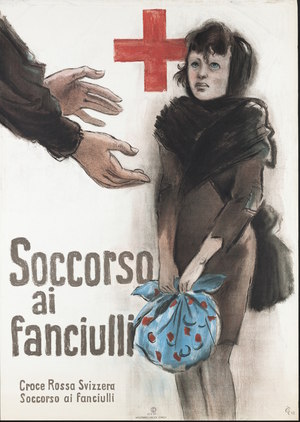
Unternavigation
Charitable Organisations
Charitable organisations, some of them denominational, have been committed to helping the poor since the Middle Ages. In the 19th century, they focused their charitable work on serving the needs of industrialized society and took on an important complementary role in the welfare state in the 20th century.
Charitable organizations form part of the private sector of the Swiss welfare state, alongside private insurance and health funds. They are composed of secular and denominational organisations, the latter of which were of particular importance leading up to the 20th century.
From Brotherhoods to Deaconesses and Congregations
Denominational organisations have traditionally played an important role in poor relief. Catholic brotherhoods have been in the service of ‘Caritas’ since the Middle Ages. The ecclesiastical term refers to a practiced philanthropy and charity that the church requests of all its followers. The church has also set up its own institutions for this purpose. Churches, Christian orders and brotherhoods helped the poor and made financial contributions to schools and hospitals. Other brotherhoods were formed by members of trade guilds and were composed of men or women, the religious or laypeople.
After the Reformation, protestant charitable organisations emerged too. Reformed communities of sisters came together in the 17th and 18th century and committed themselves to deaconry and to social welfare work according to the principles of Christian ethics. The ‘deaconesses’ were also actively involved in caring for the poor and ill.
During the 19th century Kulturkampf, liberal and radical authorities called the Catholic abbeys and orders into question and sometimes arranged for their dissolution. The male and female congregations subsequently formed differed from the cloistral orders in that they followed less stringent rules. They were also dedicated to caritas, not least in order to emphasize the right of church organisations to exist.
Charitable Organisations in Industrialized Society
The emergence of industrialized society brought about new forms of poverty, which were then debated under the collective term ‘social question’. Denominational organisations such as congregations and deaconry societies were critical in addressing these problems by getting involved in foster homes and institutions, prisons and hospitals. Congregations also provided important services for Catholic minorities in Protestant industrial regions and cities.
Christian Welfare in the Welfare State
In addition to congregations and deaconry societies, numerous Christian organisations and associations committed to performing social work locally emerged at the end of the 19th century. The Catholics created an umbrella organization in 1901 with Caritas, which gradually developed into the welfare organization that exists today. Caritas was initially concerned with the needy in Switzerland, but also helped victims of war and refugees in Europe following the Second World War. The organization has been active worldwide since 1958. The reformed counterpart, Swiss Church Aid (HEKS), was established in 1945. Like Caritas, HEKS initially supported reconstruction work in Europe and refugee aid, before it expanded its work to impoverished countries.
Alongside Christian welfare institutions, secular organisations also performed charitable work. These included smaller aid organisations (associations and foundations) as well as larger welfare organisations. The latter encompassed the Pro’ organisations, the workers’ welfare society (SAH), Mountain aid, Winter aid and Swiss Solidarity (Glückskette). Key among them, in terms of size and age, has been the Swiss Red Cross founded in 1866. Its work began with medical support during war and was successively expanded to healthcare, disaster and refugee relief as well as other social tasks.
The charitable organisations reached their peak in number of members and schemes in the mid-20th century. A survey conducted by Caritas in 1952 revealed an impressive number of around 800 institutions, foster homes and schools. The number of charitable organisations fell as the welfare state grew. However, they retained their important social function by providing support to new demographic groups such as the unemployed, asylum seekers, single mothers, the destitute and the chronically ill. Examples of the many projects they run include emergency shelters, care and integration services as well as markets offering discounted food and clothing.
Literatur / Bibliographie / Bibliografia / References: Heim Urs F. A. (1998), Leben für andere. Die Krankenpflege der Diakonissen und Ordensschwestern in der Schweiz, Basel ; Altermatt Urs et al. (2002), Von der katholischen Milieuorganisation zum sozialen Hilfswerk. 100 Jahre Caritas Schweiz, Luzern.
(12/2015)




